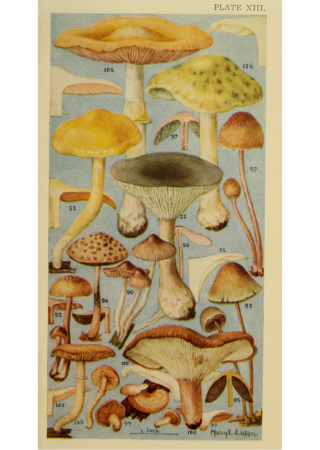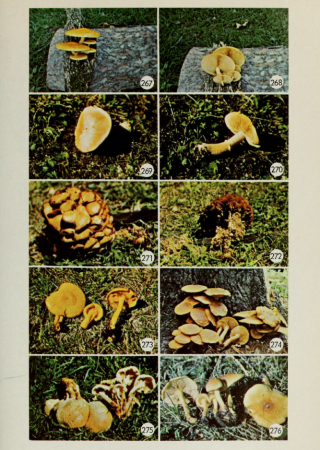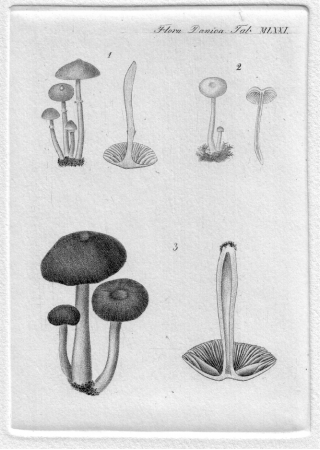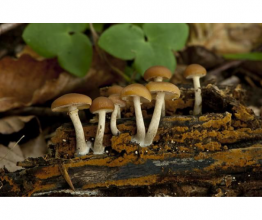California Fungi/ Funeral Bell
- ...the galerina is just as poisonous as the death cap (Amanita phalloides)?
- ...cases have been found where one stump has both galerinas and the perfectly edible sheathed woodtufts growing side by side?
- ...galerinas may be mistaken for well-liked and sought-after sheathed woodtufts, which are noted for their sweet fruity smell and occurrence on deciduous wood?
- ...galerinas are found on every continent of the northern hemisphere, and have even been found in Australia?
- ...it is easy to confuse galerinas with some edible tubarias, and in the fall, with wild Enokitakes?
Basic information:
Division: - Basidiomycota
Class - Basidiomycetes
Maximum height - 8 cm
Distribution - northern hemisphere
Type of poison - amatoxins
Distinguishing marks:
A small mushroom with broad, almost flat cap with small central bump. Cap color is gray-brown, brown to yellow-brown. Stem is cylindrical, smooth, tough and often twisted, yellow-brown to brown in color. The cap's underside has thin and closely spaced gills.
Galerinas grow primarily in spruce and pine forests. They grow on rotting logs and stumps, but also in places where wood has been worked. This small mushroom causes very serious poisonings. It ranks among the deadly poisonous, even though its size and appearance do not make it especially attractive to collectors. The toxins it contains are not broken down by heat, and remain poisonous even after being thoroughly cooked. Galerinas are almost as dangerous as the much better-known death cap (Amanita phalloides) and even contains similar toxins. A fatal dose for an adult is around 10-15 mushrooms - considering how small and thin it is, that is not very much material. Poisonings also have a similar Phalloidin effect - damage to liver and kidneys. The smaller number of poisonings, compared to the death cap, is somewhat due to its relative scarcity, but mostly because most pickers regard all small mushrooms growing from stumps as inedible 'toadstools'.





